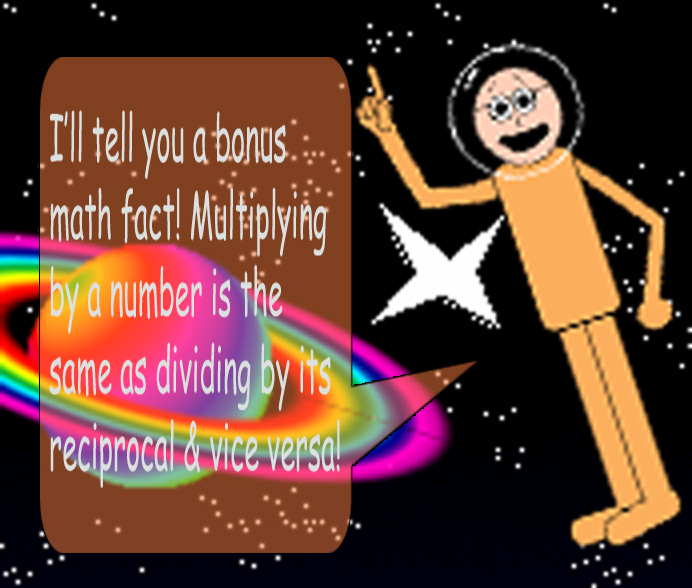
x = 100, y = 4; x^2 = 10,000
10,000 ÷ 4 = 2,500
2,500/100 = 2,500 ÷ 100 = 25
100/4 = 100 ÷ 4 = 25
The number 25 may not be a fraction, but all integers can be printed as fractions (non-algebraic ones) since they're all rational! Plus, some fractions are equal to the same number!
As long as the numerator is twice as big as the denominator, the fraction/quotient is equal to 2. Don't forget it!
x = -18, y = 3; x^2 = 324
324 ÷ 3 = 108
108/-18 = 108 ÷ -18 = -6
-18/3 = -18 ÷ 3 = -6
Both division problems & fractions gave us the same quotient!
Even if the variables are negative, this trick still works! It'll even work with non-integers!
x = 12, y = ¼; x^2 = 144
144 ÷ ¼ = 144 × 4 = 576
576/12 = 576 ÷ 12 = 48
12/(¼) = 12 × 4 = 48

x = i, y = 1/5; x^2 = -1
-1 ÷ 1/5 = -1 × 5 = -5
-5/i = -5 × -i = 5i
5i = x/y
...And imaginary/complex numbers! (Remember that negative real numbers have imaginary square roots.)
Back to Index Page Back to Math Trick Menu
© Derek Cumberbatch